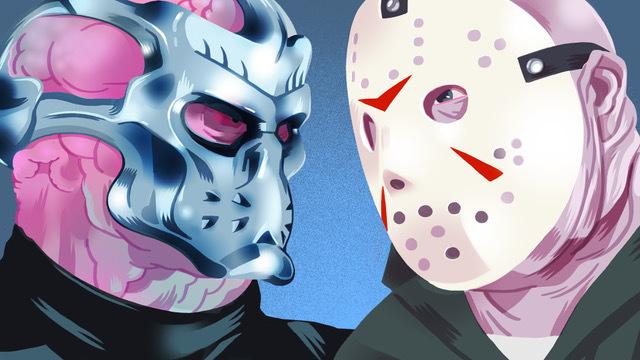The Men Behind the Hockey Mask
Despite playing one of the most iconic villains in movie history, the nine men who’ve portrayed Jason Voorhees in the 40 years of the ‘Friday the 13th’ franchise are practically ghosts. This is their story.2020’s summer blockbuster season has been put on hold because of the pandemic, but that doesn’t mean we can’t celebrate the movies from the past that we flocked out of the sun and into air conditioning for. Welcome to The Ringer’s Return to Summer Blockbuster Season, where we’ll feature different summer classics each week.
Kane Hodder knows he might sound ridiculous. He knows people might roll their eyes and stop taking him seriously. But when it comes to Jason Voorhees, the fictional cold-blooded killer who’s haunted movie screens for 40 years now, he doesn’t mince words. “I felt from the beginning that I was born to play this character,” he says. “It seemed so easy.”
While understanding how strange it is to say that portraying a vengeful, murderous man-child—one wrapped in prosthetics, disguised by a hockey mask, armed with a machete—is his destiny, Hodder can explain. Bullied as a child and frequently delinquent as a teenager, he channeled his upbringing and penchant for mischief by enrolling in a school for stuntmen in Santa Monica. Five years later, when Friday the 13th premiered in 1980 and introduced the tale of a tormented boy at summer camp who drowns because of his counselors’ neglect, Hodder subconsciously recognized the parallels to his own origin story. “I was such a huge fan of that character,” he says. “I always identified with Jason because of that. I guess in a way, even [he] is a success story of overcoming terrible things being done to you.”
As Jason returned from the dead and grew into an indestructible killing machine in subsequent sequels, Hodder’s career as a stuntman flourished. Then, things clicked. While working as a stunt coordinator on the 1987 crime drama Prison, Hodder impressed makeup supervisor John Carl Buechler during a brief performance in prosthetics. A year later, when Buechler was tapped to direct Friday the 13th Part VII: The New Blood, he wanted Hodder to take over as Jason. The script featured a variety of stunts, including a fire sequence, that made him ideal for the role. “This is a character that is known around the world,” says Hodder. “You can imagine how much of an honor I felt that was.”
The character itself isn’t a particularly enticing one for actors. Like Michael Myers, Jason is a silent stalker, dressed in cumbersome denim, burdened with a mask that covers any facial expressions. But Hodder, accustomed to staying behind the scenes, slipped into Jason seamlessly, and his portrayal in The New Blood quickly reenergized the franchise, convincing subsequent directors to bring him back for the next three installments. “I’ve had some altercations in my past, and have had some temper problems, so that probably helps me get into a character like that quickly,” he reflects. “It’s kind of an uncommon mix of abilities, to be convincingly violent and still peaceful at times.”
Hodder is one of nine actors (and even more stuntmen) who have taken on the role of Jason. Together they compose a fellowship of sorts, bound across generations by their shared depiction of Hollywood’s most notorious slasher—but even more so by their general anonymity. It’s an odd group to be a part of, the Jasons. In sequels, spinoffs, and reboots released since the premiere of Friday the 13th, which celebrates its 40th anniversary on Saturday, they’ve stalked movie screens and scared countless audiences as the central figure of one of Hollywood’s most iconic horror series. They’ve been scraped, kicked, and punched; they’ve been strangled, stabbed, and shot; they’ve been chained down deep under water; they’ve been set on fire; they’ve broken doors and shattered lots of windows. But despite playing such an integral role in movie history, they might as well be ghosts themselves.
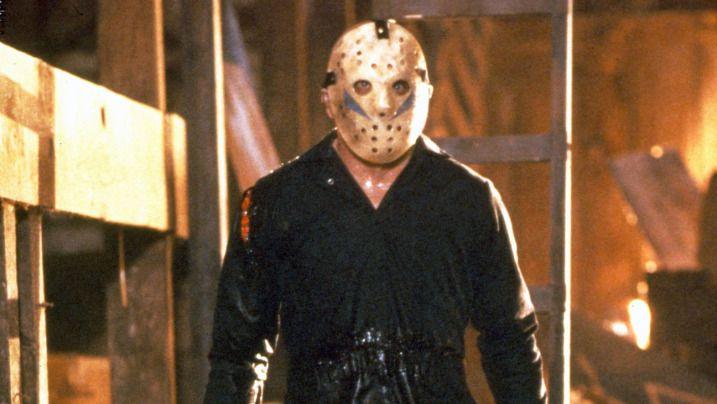
The first person to play Jason Voorhees was just a kid. Though he had barely any screen time, Ari Lehman horrified theatergoers right before the credits rolled, reemerging from beneath Crystal Lake’s surface to terrorize a counselor in her canoe. The tormented, drowned child, whose mother had murdered teenagers on his behalf, was suddenly—maybe, possibly—alive again.
That jump out of the water provided both an opportunity for a sequel and the franchise’s signature shock, a “ki-ki-ki-ma-ma-ma” coda that director Steve Miner repeated in 1981 with Friday the 13th Part 2. That sequel featured a grown Jason, hiding his altered face underneath a burlap sack and honoring his dead mother by taking vengeance on camp counselors with a machete. Though Warrington Gillette, a green, 20-year-old actor, had originally auditioned to play the camp’s head counselor, Miner thought he’d work better as his lead villain. Gillette had been to stunt school and was excited to take on the role, not realizing he wouldn’t have a speaking part until he picked up the script. Miner had based certain aspects of Jason’s look on the 1976 thriller The Town That Dreaded Sundown, and gave Gillette and Steve Dash, who later replaced Gillette during shooting to perform the majority of stunts, loose direction about how to play the character (Dash died in 2018). “You’re stiff, you grew up in the woods, you’re living on dead animals, you’re scary,” Gillette remembers being told. “Everybody thinks you’re dead but you’re not. You’re angry.”
The sequel won its first weekend at the box office, and Paramount realized its heavily repeatable potential. In 1982, Miner stayed on to direct Friday the 13th Part III in 3-D, but brought in Richard Brooker (who died in 2013) to play Jason. A young British actor who went on to train horses and work in television production, Brooker was the first to don Jason’s trademark white hockey mask, his staple signifier for the rest of the franchise. Two years later, Joseph Zito took the reins from Miner, directing Jason’s last purely human killing spree in Friday the 13th: The Final Chapter. After initially declining to wear the goalie gear, Ted White, a prolific stuntman, took over the role—a money grab, he later admitted—for a showdown with a young Corey Feldman. While its title implied the end of the series, the movie made enough money (over $11 million) in its opening weekend for executives to extend Jason’s cinematic run.
All I knew was we had a house full of guys and girls, and each one is going to get killed, one way or another. That’s the action I’m doing.Tom Morga
It took only a year for the next installment to arrive. In 1985, Friday the 13th Part V: A New Beginning featured a Jason imitator as the movie’s primary villain, but director Danny Steinmann still needed someone to act just like the masked killer for stunts and flashbacks. The movie’s stunt coordinator, Dick Warlock, suggested Tom Morga, a longtime friend and stuntman. He had the right size and height and nailed his screen test—standing up from the floor without using his hands and walking slowly and deliberately. Before he started the job, he received a call from White. “I remember he says, ‘You tell them you want something extra for wearing that damn mask,’” Morga laughs. “He was all heart and cowboy, had no respect for the idea. ‘This is a stupid horror movie.’ … I remember him growling like that.”
Morga himself didn’t have a great understanding of Jason’s eventual pop cultural significance: Near the end of filming, he brought in fellow stuntman Johnny Hock to fill in for a flashback sequence because he was too busy organizing a 10K race. “That just shows you how much I didn’t think it that important at the time,” he says. It wasn’t until the end of shooting that Morga realized he’d been playing a copycat killer—not the real Jason—the entire time. “Nobody gave me a script,” he recalls. “All I knew was we had a house full of guys and girls, and each one is going to get killed, one way or another. That’s the action I’m doing.”
To revive its original slasher, Paramount put out another casting call for 1986’s Friday the 13th Part VI: Jason Lives. It settled on C.J. Graham, a nightclub manager who was discovered one night by the studio’s special effects company when he dressed up as Jason for a hypnotist’s stage act. Director Tom McLoughlin had already hired a full stuntman, but after being disappointed by his performance in a paintball sequence, producers called up the inexperienced Graham to replace him. Graham remembers being given specific instructions for how to embody Jason, who by then had died and risen again. “[Tom] wasn’t looking for a zombie, he was looking for somebody similar to Frankenstein, with curiosity factors and the brain being reconnected,” Graham says. “Tom was satisfied with the past, but he wanted to make his own creation.”
The series continued its shift into the supernatural when Hodder took over for the next four sequels. In 1988’s Part VII: The New Blood, he made his debut battling a telekinetic teenager; he took a boat trip in 1989’s Part VIII: Jason Takes Manhattan; he was dragged to an inferno in 1993’s Jason Goes to Hell: The Final Friday; and then he was catapulted to space in 2001’s Jason X. When director Ronny Yu began casting for the 2003 spinoff Freddy vs. Jason, he wanted someone taller than Hodder who could tower over Robert Englund’s Freddy Krueger. Ken Kirzinger had worked with Hodder as a stunt coordinator and briefly doubled him in Jason Takes Manhattan, so he was familiar with the character when producers asked him to audition. “They put me in a room and gave me a cheap Jason mask and I read the opening scene,” Kirzinger says. “They’d known I had experience wearing the costume before, and [Ronny] was just very specific about the walk and moving very slowly, which feels really weird. You’re basically moving in slow motion.” With a bigger budget than the previous movies, Yu used Jason doubles for his second and third units and more dangerous stunt sequences. Marcus Nispel did the same for his Friday the 13th reboot in 2009, the most recent chapter in the saga. Nispel tapped Derek Mears for his villain, and used Dustin Dennard for two weeks of stunts, envisioning more of an action figure in the aesthetic of Frank Frazetta, a fantasy and science fiction artist. Nispel’s concept designer suggested Mears should be more nimble than lumbering, taking seriously the idea that “he’s a survivor, he’s a kid who grew up in the woods, he would learn from animals,” Nispel says.
To Nispel, hiring Mears, a longtime stuntman and monster actor, made sense primarily because of his easygoing and patient reputation. Like the long list of Jason actors and stunt doubles, Mears had been used to the makeup chair and the claustrophobic feeling of covering his face. “Here’s a guy who not only is used to their lengthy process in the morning, but can also sell the mask,” Nispel says. “[Stuntmen] make really great soldiers.”
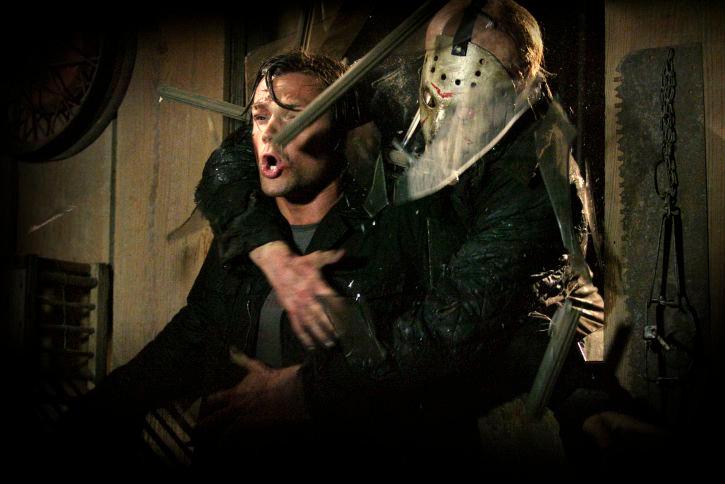
From a distance, playing Jason doesn’t seem too labor-intensive. But physicality is only part of the equation. Take the climactic scene in Part II, when the last surviving counselor, played by actress Amy Steel, bends down to greet her small dog inside a cabin. As she opens her arms, believing the night’s teenage carnage to be over, an unmasked, disfigured Jason bursts through the window behind her. Screams and violin strings screech in unison as his arms reach out to grab her. The slow-motion shockwave presents another ambiguous, but nonetheless terrifying, ending.
Though the scene lasts just 30 seconds, Gillette had spent eight hours caked in makeup by the time production was ready to shoot. The stunt required him to leap off a makeshift platform and through glass, without any cranes or wenches—but it was a test of endurance as much as anything. On his first attempt, he ricocheted off the plexiglass. “I didn’t realize the force required to get through it,” says Gillette. After eventually shattering the pane, he repeated the stunt 10 more times. Because Jason’s uneven facial structure allowed visibility through only his left eye, Gillette had to adjust to the lack of depth perception. “Not to mention your mouth has all these fake dentures,” he laughs. “You’re pissed off. You’re ready to go through there and kill somebody.” But they did eventually get what they needed. “One of the smart things was Amy Steel never saw the face of Jason until I blasted through the window,” says Gillette. “You can see the pictures of her—she looks like she’s going to have a cardiac arrest.”
Because the franchise has been keen on small budgets and big profits, special effects weren’t exactly an option. Instead, production leaned on those portraying Jason to use their stunt experience to guide them through demanding, difficult shooting experiences like that. As Gillette and many others describe, embodying an unathletic killer with heavy makeup and a mask wasn’t always an easy task; pulling off increasingly absurd stunts as that unathletic killer was even harder.
Hodder: Once I got the job, I watched all the movies again to see what things I liked that previous guys did, and what things I thought I could do better. I really took it seriously.
Kirzinger: I’ve paid attention to the body language of all the actors I’ve doubled because I had to see how they moved. Body language is the only form of communication Jason has.
Dennard: They had sent me some dailies [to see] how Derek [Mears] carried himself, how he put his hand through things, how he reached around. Trying to match that and mimic that was important.
Hodder: When you can use your voice, or even your facial expressions, you can be way more intimidating. Try to be intimidating by just staring at somebody.
Your mouth has all these fake dentures. You’re pissed off. You’re ready to go through there and kill somebody.Warrington Gillette
Graham: I challenge you to stand in front of the mirror, cover one eye up, and make a circle around the other eye with your fingers. Your peripheral vision will be blocked. Then I want you to show anger, curiosity, violence, power—but you can’t use facial expressions. Everything has to be shown through motion.
Morga: Your peripheral vision is always cut down by the mask or the makeup stuff. You’re moving your head and shoulders around a lot, looking to see exactly where you are. Steve Dash had to look through a bag with a hole in it.
Dennard: [I was] in the hood before we started using the mask … it only had one eye. You find ways after you’ve done enough creature work or costume work—where your eye line can be, how you see things—and you get comfortable with it.
Graham: Put a hood on, put a hockey mask on, and tell me if you don’t mentally change into a character.
Kirzinger: I’ve played Sasquatch, robots, and superheroes, and every costume helps bring that personality to you. Seeing myself in costume, they’re putting the makeup on you and the mask, all that helps you put on that persona.
Gillette: In this particular case, makeup and special effects were freaky—and you start to believe yourself in this role. Plus we were all roughhousing young guys at the time. It was all kind of shocking because we don’t all normally walk around with machetes in our hand.
Morga: I didn’t do any prepping for this. I didn’t even consider that I’d need to look something up. I’m going to use the machete, I’m going to walk through the woods, I’m going to grab somebody, throw them out a window, break them through a wall … it’s all the kind of things we do.
Kirzinger: It’s so technical. You’ve got the blood hoses, you’ve got the fake body parts, you’re working with actors where you’re going to rip their arm off, but everyone knows it’s a prosthetic.
Graham: When you’re in the military, you learn how to compartmentalize a lot. When you have a responsibility, you do it. When it came time to go to work, I went to work. There’s a lot of photos where I’m just sitting in the back of the special effects truck with a hood around my neck getting ready to put a mask on, getting ready to go get shot a couple times.
Gillette: You’re living your day opposite. I remember it was my birthday, and there you are in the woods, it’s midnight on your birthday, asking yourself, “What in the hell am I doing?”
Kirzinger: There was one situation [in Freddy vs. Jason] where Jason gets stabbed in the neck with syringes, he falls flat on his back on the concrete, and I had to do that several times. A lot of [the crew] was wondering, “How do you do that without hurting yourself?” Well, you’ve got to hide pads in the right place, and then you want to land on your side a little. You don’t want to land flat on your back.
Graham: The scene where the sheriff shoots me [in Part VI], and I fly back—that’s a cable, hooked onto my back. When the cap went off, I was airborne, and it jerked me so hard that all you do is hold onto the ride and hope you land straight.
Dennard: On an actual shoot day, I dislocated three of my fingers. I bust through a bathroom floor and I’m trying to grab the characters and pull them down through this hole, and [one] is kicking at me and pushing me away. That’s part of the job. There’s definitely carnage.
Hodder: I have been very fortunate in my life. People say, “How fortunate? [Didn’t] you almost die from being on fire?” [But] I decided to go back to fire stunts. My favorite one that I’ve ever done happens to be in Part VII. That’s one of the best fire stunts you’ll ever see, because I had so much fire on me and I was on fire for such a long time. When you watch the movie, by the time I start to fall down, the flames had started dying down. I’d burned all the fuel off. My [safety supervisor] was like, “Finally!”
Morga: You’re always involved in some kind of thing that is physical. When I did Michael Myers, I drove a truck through a garage. You’re doing different stuff, you’re not trying to be a special character.
Kirzinger: I think the fun part is that [Jason] always wins. As a stuntman, I’m always used to losing fights. Jason’s still a bad guy, obviously, but he’s more of a rabid dog. It’s not really the dog’s fault.
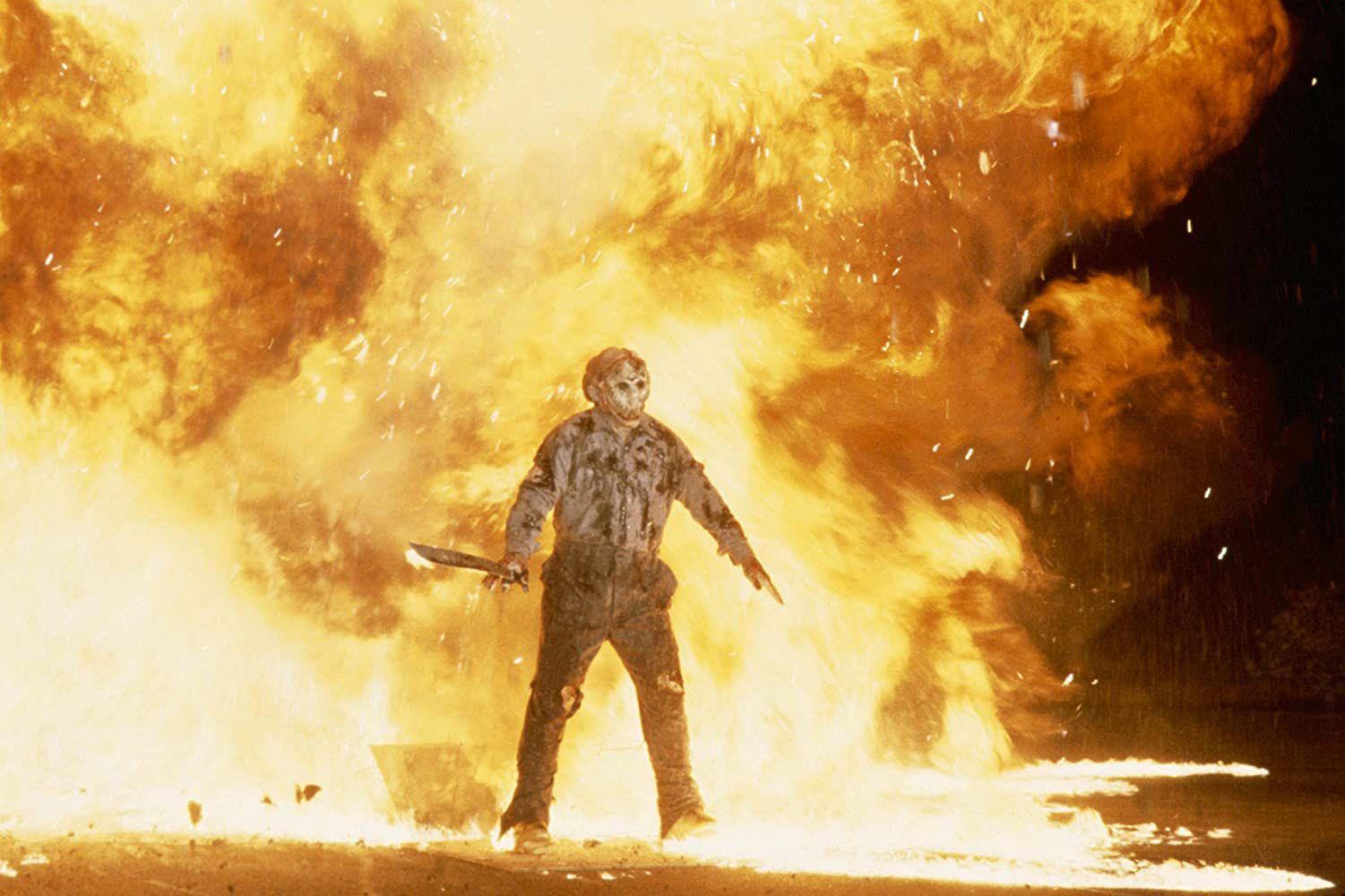
As a general rule, stunt people must be equipped with the right combination of guts and humility. For all the violent endeavors they’re asked to endure, for how much their bodies are repeatedly put on the line, their ultimate service to a production is to be a blur, faceless. It’s an obligation, and perhaps a strange trade-off, when playing the star and anchor of a wildly popular horror franchise like Friday the 13th. While its fans clamored each year to see their favorite masked killer, the stuntmen responsible for bringing Jason to life—for slicing up horny teens and risking body parts in the process—lived in anonymity.
The first time Gillette saw his transformation as Jason Voorhees on film was during Part II’s 1981 premiere at the Loews 84th Street theater in Manhattan. Andy Warhol, whom Gillette knew from their days at Studio 54, entered the theater with him, and a raucous, anticipatory crowd awaited inside. “I didn’t know what to expect. I didn’t know what was coming when,” Gillette says. “Then when you see it told together, and you get the effect of the music and editing, you’re shocked—and then the people around you are shocked. And Andy Warhol is sitting there, loving it.” Still, part of Gillette wished those cheering in the audience would have recognized him afterward. “You’re hoping that your real likeness would be shown, but that didn’t happen,” he laughs.
Hodder remembers a similar experience at the premiere for Part VII. The packed Grauman’s Chinese Theater in Hollywood “went fucking nuts,” he recalls. Though Buechler had to cut many extended kill scenes for an R rating, Hodder felt gratified with the way the audience was reacting to his spin on Jason. (He added a heavy breathing technique, “so it looks like I’m about to explode any moment,” he says.) “To see people respond to things that I thought might be very subtle in the performance … they appreciated that,” he says. Like Gillette, though, nobody recognized Hodder as the slasher, but as the fan base has kept growing, that’s changed.
Over the past few decades, those who have portrayed Jason have joined the convention circuit, where their names and faces have become synonymous with the hockey mask. Slowly, they’ve become less like movie ghosts, finally heralded as important figures to the franchise.
The fun part is that [Jason] always wins.Ken Kirzinger
Hodder: I went to “Weekend of Horrors” at L.A. Airport in 1988 after Part VII had come out. John Buechler was doing a panel there and said I should come down and check this out. I said, “OK,” not thinking anybody was going to give a shit about me. I went down there and found out everybody did, in fact, care about the new guy playing Jason. That’s where I realized how huge of a career changer that was.
Morga: Kane [Hodder is] the guy who really started the idea of making this character fan-responsive. I don’t know how much would have gone on if he hadn’t really started going to conventions and seeing the fans and making something out of it.
Graham: There are now conventions every weekend somewhere. It’s in London, Sweden, Germany, New Jersey, Seattle, or Texas.
Kirzinger: People will go, “You’re him, you played Jason in Freddy vs Jason.” I’m always blown away that they would know me.
Gillette: You’ve got to be grateful when young people, in particular, want your autograph and want to pay for it. That’s flattering in itself. And they want that because all the people who are part of the brand are valuable to them.
Hodder: As soon as you walk in the bar, people are trying to buy you drinks. So you get that ego boost. But when you go out in the regular public, it’s not often you get recognized. We have really the best of both worlds.
Kirzinger: I think we share a certain bond for the most part. Having done it and having run into each other over and over again, we’re part of an elite club of guys that got to play this iconic character, and I think most of us respect that about each other.
Graham: All the Jasons have camaraderie. Kane and I are probably the closest. I just texted Derek [Mears] a few days ago to see how he and his new wife are doing. Ken is up in British Columbia, it’s easy to reach out to him.
Morga: We, as guys who did the character, have to give Kane a lot of credit because he’s the one that made this thing come alive.
Hodder: That could be accurate. Now, every guy that’s put the mask on goes to conventions.
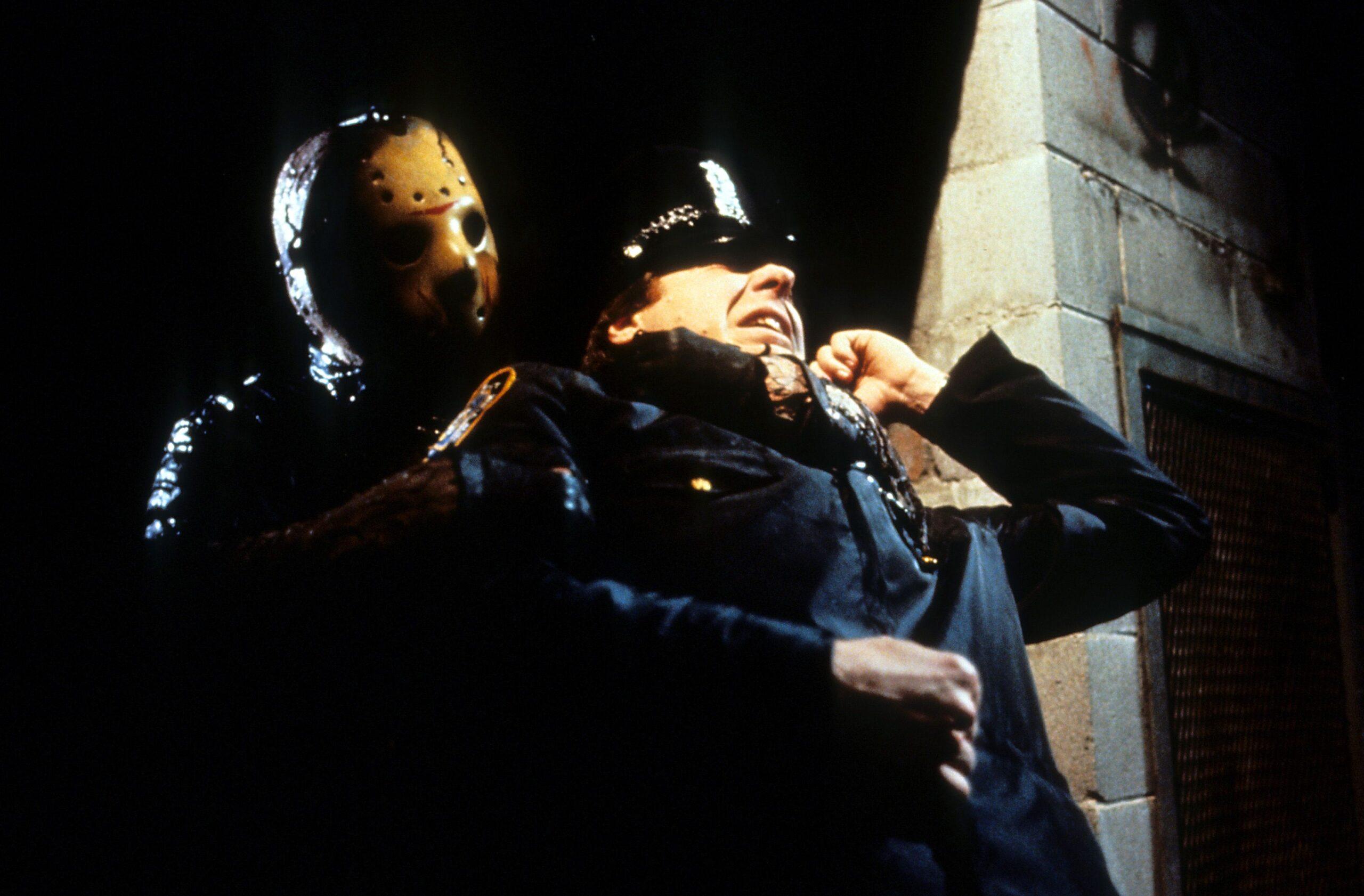
Despite Jason Voorhees’s absence from the big screen for the past 11 years, he’s continued to haunt—and comfort—new generations of fans.
Part of that is merchandising. In the past decade, five video games centered on the Crystal Lake killer have been made with various levels of realism. Friday the 13th: The Game allows players to control Jason or a camp counselor, and each must try to kill or escape from the other, respectively. A less graphic depiction on Friday the 13th: Killer Puzzle gives gamers the opportunity to swing their machetes by following isometric puzzles. Then there are the dozens of action figures and individualized Funko Pop! figurines. “Duane Reade carries them across the United States—Jason II in a box—and you’re sitting there thinking, ‘Oh my God,’” Gillette says. “All these kids are playing the video game, then they get the Funko Pop!, and then they come to me and want it signed.”
But the bigger through line connecting a frightful 1980s villain with a Gen Z college student remains Jason’s backstory. Graham remembers a 22-year-old coming to his table at a recent convention and starting to cry, overwhelmed he was meeting the man behind the mask. As a kid he’d been bullied in school, and he’d often return home to watch Part VI. “Even though he’s not a violent person, it made him feel that there were different people out there. For him it was a release valve,” Graham says. “For a horror movie, it’s highly interpretable by the individual watching—how they compartmentalize it themselves [as] good, bad, or indifferent.”
Graham now has a Cameo account, and in the past month he’s recorded messages for kids as young as 7 years old. “He hasn’t seen [the movie],” Graham says of the youngster. “But he and his stepdad play the video game. It’s wild, right?” Graham’s wife has even been posting TikToks of her husband and tagging them #JasonVoorhees. For Graham, a nightclub manager who went on to run casinos, playing Jason was just a job, a rare opportunity to be in a movie. Now, the experience has transitioned from fun cocktail conversation to an enduring part-time job.
“It’s fun to be part of something that got so big,” Gillette says. “But the real value is what happened after me. All these people worked and worked and 40 years later, look at what they created here.” Kirzinger acknowledges that among the dozens of characters he’s portrayed, Jason continues to stick with him the most. “[It’s] just the cherry on my sundae of 30-some-odd years working in the business,” he says. “I got to play an iconic character that stands out, that people remember … for that I will always be grateful.”
Hodder, meanwhile, the only actor of the group that’s played Jason more than once, is just itching to wear the mask a fifth time. In the years since he first donned it, he’s gone from random stunt guy to de facto ambassador for Friday the 13th. The future of the franchise remains murky thanks to a long-standing legal dispute between original producer and director Sean S. Cunningham and writer Victor Miller, but Hodder will be ready to return if the time ever comes. No matter what.
“I’ve always wanted to do one more, and that would be the 13th movie,” he says. “I turned 65 two weeks ago. I’ll still bust your ass.”
Jake Kring-Schreifels is a sports and entertainment writer based in New York. His work has also appeared in Esquire.com, GQ.com, and The New York Times.
